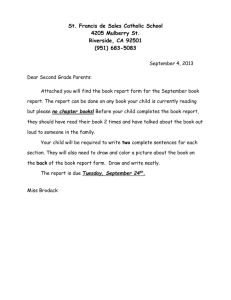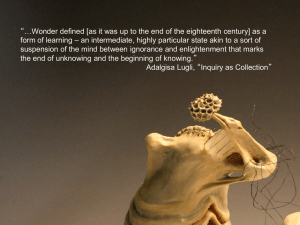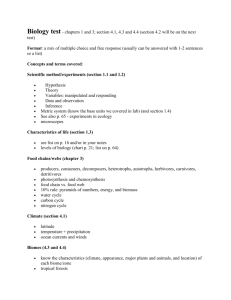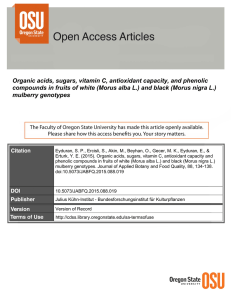Cryopreservation of elite temperate mulberry germplasm CORRESPONDENCE
advertisement
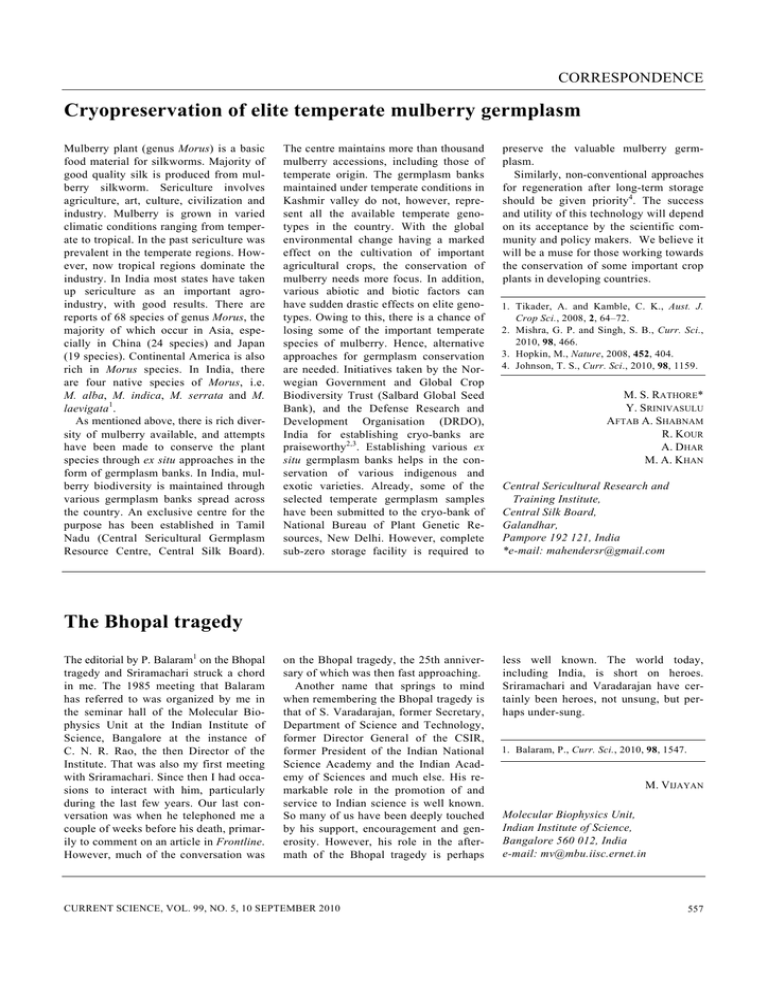
CORRESPONDENCE Cryopreservation of elite temperate mulberry germplasm Mulberry plant (genus Morus) is a basic food material for silkworms. Majority of good quality silk is produced from mulberry silkworm. Sericulture involves agriculture, art, culture, civilization and industry. Mulberry is grown in varied climatic conditions ranging from temperate to tropical. In the past sericulture was prevalent in the temperate regions. However, now tropical regions dominate the industry. In India most states have taken up sericulture as an important agroindustry, with good results. There are reports of 68 species of genus Morus, the majority of which occur in Asia, especially in China (24 species) and Japan (19 species). Continental America is also rich in Morus species. In India, there are four native species of Morus, i.e. M. alba, M. indica, M. serrata and M. laevigata1. As mentioned above, there is rich diversity of mulberry available, and attempts have been made to conserve the plant species through ex situ approaches in the form of germplasm banks. In India, mulberry biodiversity is maintained through various germplasm banks spread across the country. An exclusive centre for the purpose has been established in Tamil Nadu (Central Sericultural Germplasm Resource Centre, Central Silk Board). The centre maintains more than thousand mulberry accessions, including those of temperate origin. The germplasm banks maintained under temperate conditions in Kashmir valley do not, however, represent all the available temperate genotypes in the country. With the global environmental change having a marked effect on the cultivation of important agricultural crops, the conservation of mulberry needs more focus. In addition, various abiotic and biotic factors can have sudden drastic effects on elite genotypes. Owing to this, there is a chance of losing some of the important temperate species of mulberry. Hence, alternative approaches for germplasm conservation are needed. Initiatives taken by the Norwegian Government and Global Crop Biodiversity Trust (Salbard Global Seed Bank), and the Defense Research and Development Organisation (DRDO), India for establishing cryo-banks are praiseworthy2,3. Establishing various ex situ germplasm banks helps in the conservation of various indigenous and exotic varieties. Already, some of the selected temperate germplasm samples have been submitted to the cryo-bank of National Bureau of Plant Genetic Resources, New Delhi. However, complete sub-zero storage facility is required to preserve the valuable mulberry germplasm. Similarly, non-conventional approaches for regeneration after long-term storage should be given priority4. The success and utility of this technology will depend on its acceptance by the scientific community and policy makers. We believe it will be a muse for those working towards the conservation of some important crop plants in developing countries. 1. Tikader, A. and Kamble, C. K., Aust. J. Crop Sci., 2008, 2, 64–72. 2. Mishra, G. P. and Singh, S. B., Curr. Sci., 2010, 98, 466. 3. Hopkin, M., Nature, 2008, 452, 404. 4. Johnson, T. S., Curr. Sci., 2010, 98, 1159. M. S. RATHORE* Y. SRINIVASULU AFTAB A. SHABNAM R. KOUR A. DHAR M. A. KHAN Central Sericultural Research and Training Institute, Central Silk Board, Galandhar, Pampore 192 121, India *e-mail: mahendersr@gmail.com The Bhopal tragedy The editorial by P. Balaram1 on the Bhopal tragedy and Sriramachari struck a chord in me. The 1985 meeting that Balaram has referred to was organized by me in the seminar hall of the Molecular Biophysics Unit at the Indian Institute of Science, Bangalore at the instance of C. N. R. Rao, the then Director of the Institute. That was also my first meeting with Sriramachari. Since then I had occasions to interact with him, particularly during the last few years. Our last conversation was when he telephoned me a couple of weeks before his death, primarily to comment on an article in Frontline. However, much of the conversation was on the Bhopal tragedy, the 25th anniversary of which was then fast approaching. Another name that springs to mind when remembering the Bhopal tragedy is that of S. Varadarajan, former Secretary, Department of Science and Technology, former Director General of the CSIR, former President of the Indian National Science Academy and the Indian Academy of Sciences and much else. His remarkable role in the promotion of and service to Indian science is well known. So many of us have been deeply touched by his support, encouragement and generosity. However, his role in the aftermath of the Bhopal tragedy is perhaps CURRENT SCIENCE, VOL. 99, NO. 5, 10 SEPTEMBER 2010 less well known. The world today, including India, is short on heroes. Sriramachari and Varadarajan have certainly been heroes, not unsung, but perhaps under-sung. 1. Balaram, P., Curr. Sci., 2010, 98, 1547. M. VIJAYAN Molecular Biophysics Unit, Indian Institute of Science, Bangalore 560 012, India e-mail: mv@mbu.iisc.ernet.in 557
